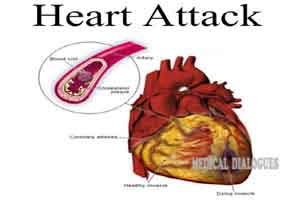- Home
- Editorial
- News
- Practice Guidelines
- Anesthesiology Guidelines
- Cancer Guidelines
- Cardiac Sciences Guidelines
- Critical Care Guidelines
- Dentistry Guidelines
- Dermatology Guidelines
- Diabetes and Endo Guidelines
- Diagnostics Guidelines
- ENT Guidelines
- Featured Practice Guidelines
- Gastroenterology Guidelines
- Geriatrics Guidelines
- Medicine Guidelines
- Nephrology Guidelines
- Neurosciences Guidelines
- Obs and Gynae Guidelines
- Ophthalmology Guidelines
- Orthopaedics Guidelines
- Paediatrics Guidelines
- Psychiatry Guidelines
- Pulmonology Guidelines
- Radiology Guidelines
- Surgery Guidelines
- Urology Guidelines
Exercising after Heart Attack Reduces Death Risk by HALF

According to a research presented at EuroPrevent 2018, a European Society of Cardiology Congress, Exercising after a heart attack reduces the risk of death to half. The said study was conducted by Dr Örjan Ekblom, associate professor, Swedish School of Sport and Health Sciences, GIH, Stockholm, Sweden, and colleagues to determine the impact of exercise on survival of heart attack patients.
The study, which was a collaboration between the GIH and Centre for Health and Performance at Gothenburg University, Sweden, assessed the association between physical activity and survival after a heart attack. The study included 22,227 patients in Sweden who had a myocardial infarction between 2005 and 2013. Data was obtained from the RIKS-HIA registry, SEPHIA registry, and Swedish Census registry.
Levels of physical activity were reported 6-10 weeks and 12 months after the heart attack. The difference between answers was considered a change in physical activity over the year following the heart attack.
On both occasions, patients were asked how many times they had exercised for 30 minutes or longer during the previous seven days. Patients were categorised as constantly inactive, reduced activity, increased activity, or constantly active.
A total of 1,087 patients died during an average follow-up of 4.2 years. The researchers analysed the association between the four categories of physical activity and death, after adjusting for age, sex, smoking, and clinical factors. Compared to patients who were constantly inactive, the risk of death was 37%, 51%, and 59% lower in patients in the categories of reduced activity, increased activity, or constantly active, respectively.
Dr Ekblom said: "Our study shows that patients can reduce their risk of death by becoming physically active after a heart attack. Patients who reported being physically active 6 to 10 weeks after the heart attack but became inactive afterwards seem to have a carry-over benefit. But of course the benefits for active people are even greater if they remain physically active."
Dr Ekblom said the study provided additional evidence for healthcare professionals and policy makers to systematically promote physical activity in heart attack patients. He said: "Exercising twice or more a week should be automatically advocated for heart attack patients in the same way that they receive advice to stop smoking, improve diet, and reduce stress."
"Our study shows that this advice applies to all heart attack patients," he continued. "Exercise reduced the risk of death in patients with large and small myocardial infarctions, and for smokers and non-smokers, for example."
Dr Ekblom said the study did not investigate what type of exercise patients undertook. "More research is needed to find out if there is any type of activity that is especially beneficial after a heart attack," he noted, "Should patients do resistance exercise, aerobic training, or a combination, for example? Is walking sufficient or do patients need more vigorous exercise which makes them short of breath? Answering these questions will help us to give more specific advice."
For more information click on the link: https://www.escardio.org/The-ESC/Press-Office/Press-releases/exercise-after-a-heart-attack-it-could-save-your-life?hit=wireek

Disclaimer: This site is primarily intended for healthcare professionals. Any content/information on this website does not replace the advice of medical and/or health professionals and should not be construed as medical/diagnostic advice/endorsement or prescription. Use of this site is subject to our terms of use, privacy policy, advertisement policy. © 2020 Minerva Medical Treatment Pvt Ltd